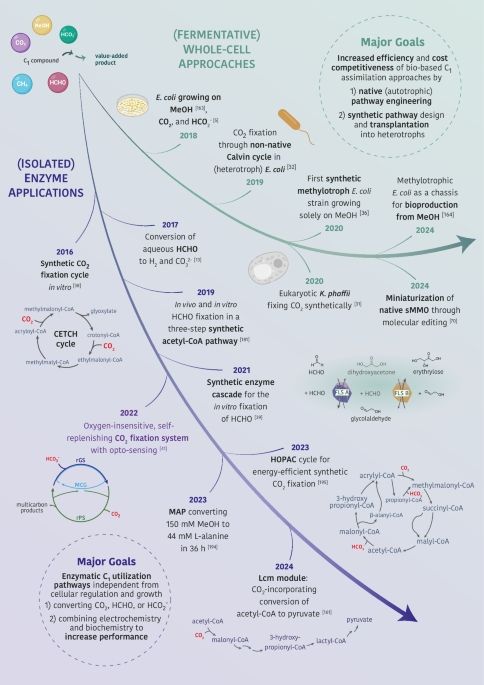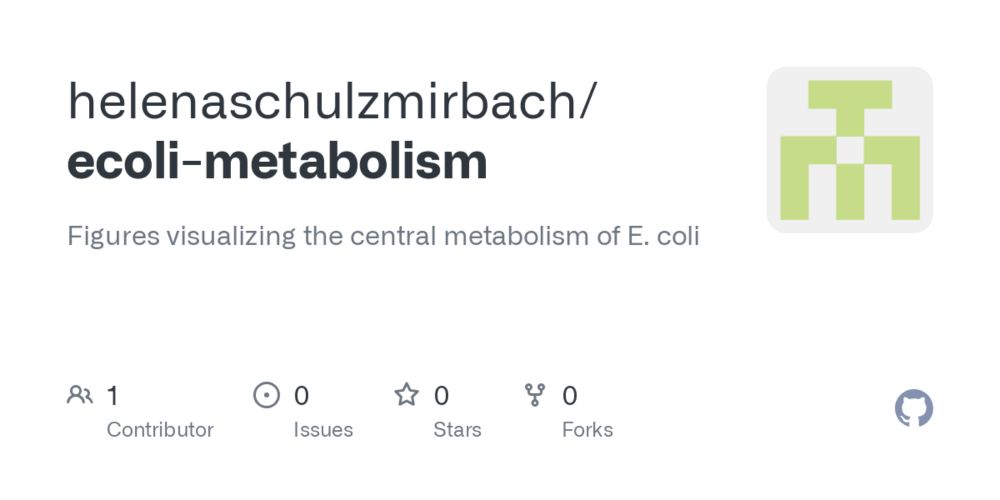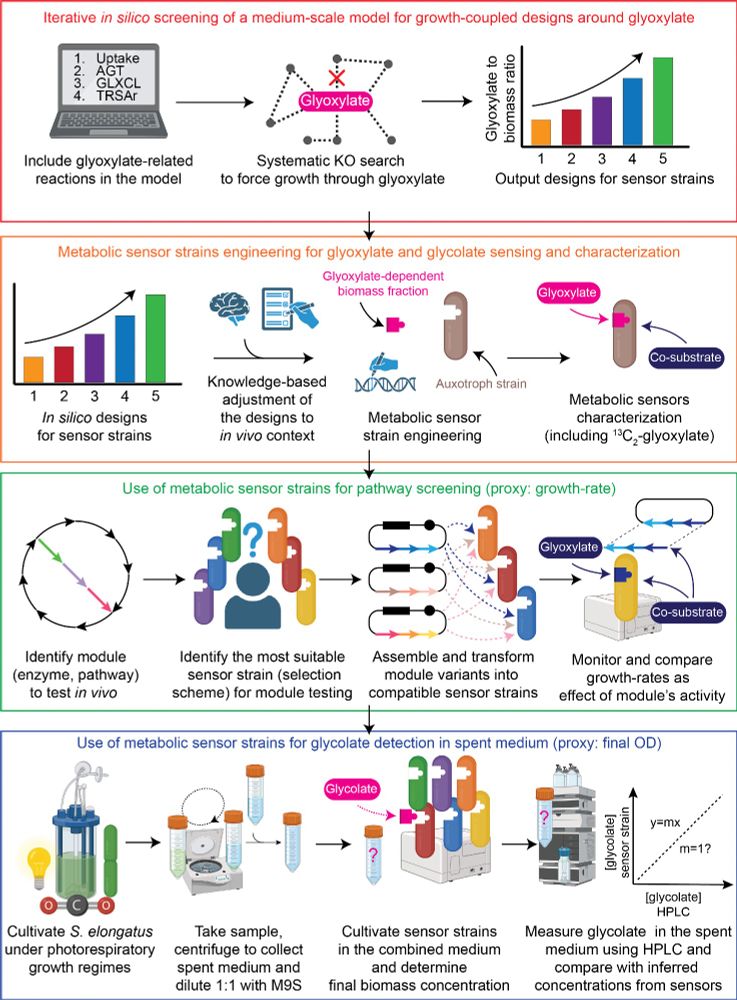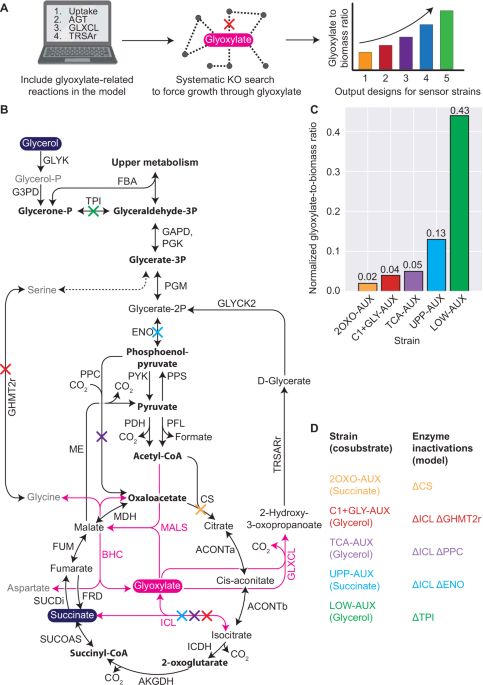Good luck and congratulations Gerrich, I am sure you will do amazing!
09.10.2025 10:30 — 👍 2 🔁 0 💬 1 📌 0Helena Schulz-Mirbach
@helenasm.bsky.social
PhD student rewiring E. coli for synthetic C1 assimilation
@helenasm.bsky.social
PhD student rewiring E. coli for synthetic C1 assimilation
Good luck and congratulations Gerrich, I am sure you will do amazing!
09.10.2025 10:30 — 👍 2 🔁 0 💬 1 📌 0Please repost!
Postdoc in adaptive laboratory evolution and C1 synthetic metabolism!
Location: DTU Biosustain
🦠🧬🔬
Starting in 01/2026!
Fell free to reach out if you have questions!
efzu.fa.em2.oraclecloud.com/hcmUI/Candid...

Our perspective on C1 utilizing bioprocesses moved online, a super teamwork made it possible 👏
www.nature.com/articles/s41...
4) Many thanks to @beaubd.bsky.social and Tobias Erb for all the interesting discussions. In addition, want to thank Hai He, María Suárez Diez, and Elad Noor for constructive feedback on this work!
12.07.2025 16:44 — 👍 1 🔁 0 💬 0 📌 03) My hope is that this is a starting point to compile selection strains into a readily accessible collection. Let me know if you’d be interested !
12.07.2025 16:00 — 👍 1 🔁 0 💬 1 📌 0
2) To make the metabolism schemes broadly accessible, you can download the .ai files from github.com/helenaschulz... ! Can only recommend laminating those to sketch on when discussing anything metabolism :) .
12.07.2025 16:00 — 👍 2 🔁 0 💬 2 📌 01) We dive into how strain growth parameters and pathway attributes are correlated, update some of the most central #schemes to our work (which I first got to work with in the Bar-Even lab!) and reflect on future developments in the field.
12.07.2025 15:58 — 👍 0 🔁 0 💬 1 📌 0
#Growth-coupled #selection just got an update ! In the last years, E. coli selection strains for #central , #amino #acid and #energy metabolism intermediates were created by the community. So, we compiled them and revisit the core concepts of growth coupling.
www.sciencedirect.com/science/arti...
#ME16
This is quite subjective , but imo
@helenasm.bsky.social just gave the most impressive talk of the conference so far and she is "only" in the third year of her PhD.
If you are interested in synthetic pathway engineering or C1 fixation you should check out her research.
Thank you so much Gerrich ! I am so honoured to show my work to such a supportive and interested audience and genuinely enjoyed discussing with you afterwards. Looking forward to see you shape tools for difficult-to-access hosts !
17.06.2025 10:51 — 👍 1 🔁 0 💬 1 📌 0
Excited to share a main project from my PhD, out now in
@naturecomms.bsky.social! 📝
We've designed and brought to life the “CORE cycle” – a new-to-nature pathway that provides a novel route for biological CO2 capture 🦠🌱
nature.com/articles/s41...
Take a look! Thread below... 🧵

We just #published an end-to-end work for the computer-aided design💻, construction🛠️, validation✅, characterization🔬 & application💪 of #auxotroph metabolic sensors, the work-horses of in vivo growth-coupled selection screening systems-using glycolate as test case. 🧵👇1/
www.nature.com/articles/s41...
9) It was a true pleasure to work with Enrico Orsi, Hai He, Elad Noor, Ari Satanowski, Pablo Nikel, Tobias Erb and all co-authors involved. The origins of the strains go way back to the Bar-Even lab and Charlie Cotton creating the first strains - I am more than grateful to see it out !
04.03.2025 18:09 — 👍 2 🔁 0 💬 0 📌 08) The sensor strains are supposed to become a #community resource – so please feel free to reach out to us if you could apply them in your projects! This work would not have been possible without Enrico Orsi doing a tremendous job at leading it.
04.03.2025 18:08 — 👍 3 🔁 0 💬 1 📌 07) Of course, you can also use them to detect glyoxylate or glycolate in #environmental applications. For example, we could quantify how much glycolate was produced by #cyanobacteria during #photorespiratory growth based on the OD our sensors reached.
04.03.2025 18:06 — 👍 1 🔁 0 💬 1 📌 06) What can you use those sensors for ? Amongst other things, to select for synthetic metabolic modules. As an example in the context of #C1assimilation, we engineered a module of the HOPAC cycle and show that we can determine the best #expression strength for the catalysts.
04.03.2025 18:06 — 👍 1 🔁 0 💬 1 📌 05) Next, we characterised the strains by verifying expected metabolic fluxes by isotope tracing and determining their selective demands with #glyoxylate and #glycolate.
04.03.2025 18:06 — 👍 1 🔁 0 💬 1 📌 04) So, we went ahead and constructed the respective #sensorstrains. By adding some additional #knockouts we prevented the emergence of known metabolic bypasses for the selections.
04.03.2025 18:06 — 👍 1 🔁 0 💬 1 📌 03) To identify such cross-connections and the relevant gene deletions, we asked Hai He and Elad Noor if they could predict knockouts conferring a growth dependence on glyoxylate. Using the medium-scale iCH360 model they found multiple designs of varying #demands!
04.03.2025 18:05 — 👍 1 🔁 0 💬 1 📌 02) However, my beloved model microbe #Ecoli doesn’t need glyoxylate for growth - it is nonessential. How do you design a strain that is #auxotrophic for such a metabolite ? Easy, you “just” rewire the metabolism, so that biomass precursor must be made from #glyoxylate!
04.03.2025 18:05 — 👍 1 🔁 0 💬 1 📌 01) #Glyoxylate is a key intermediate of synthetic #CO2fixation metabolism - for example, it is the product of the CETCH, the HOPAC or the MOG cycles. To implement those designs in vivo, we want to couple cell growth to those synthetic pathways.
04.03.2025 18:04 — 👍 1 🔁 0 💬 1 📌 0
Really happy to share that our work on constructing six glyoxylate / glycolate sensors covering a three order of magnitude concentration range is out now in Nature Communications ! 🔥
Read below to see how we developed the sensors and what they are good for 🥳.
www.nature.com/articles/s41...